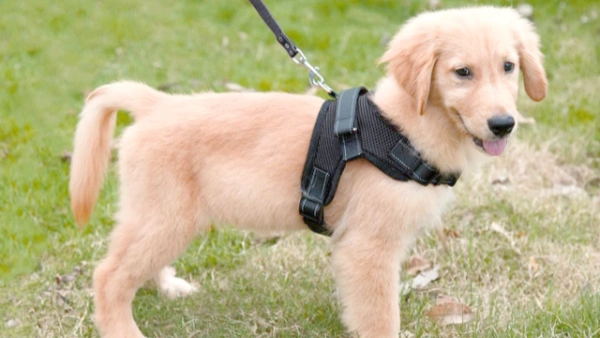2025’s Proven: How to Train Your Dog to Not Bark
Barking is one of the most common behavior issues in dogs, but with the right training methods, you can significantly reduce it. In this guide, you'll learn how to train your dog to not bark by understanding the root causes, using positive reinforcement, managing your dog's environment, and avoiding common mistakes. Whether your dog barks at the doorbell, strangers, or when left alone, these practical tips will help you create a more peaceful home.
Step 1: Understand Why Your Dog Is Barking
Before learning how to train your dog to not bark, it's important to figure out what’s causing the barking. Dogs may bark due to anxiety, boredom, a need for attention, or external triggers like doorbells or unfamiliar people. Observe when and why your dog barks. For example, does your dog bark when left alone? Or is it more reactive to certain sounds? Identifying these patterns is the foundation of how to train your dog to not bark effectively. Avoid punishing your dog without understanding the cause—this can make things worse.

Step 2: Teach the “Quiet” Command Using Positive Reinforcement
One of the key strategies in how to train your dog to not bark is teaching the “quiet” command. When your dog starts barking, calmly say “quiet” and wait for them to stop barking, even if it’s just for a second. As soon as they pause, reward them with a treat or praise. Repeat this process consistently and gradually increase the duration of silence before giving the reward. For example, start with 1 second of silence, then work up to 5 seconds, then 10. This trains your dog to associate being quiet with good things.
Step 3: Provide Enough Physical and Mental Exercise
Excess energy often leads to excessive barking. A tired dog is usually a quiet dog. Daily walks, sniffing games, and puzzle toys can help burn off energy and reduce boredom-related barking. If you’re wondering how to train your dog to not bark, don’t overlook exercise. Keeping your dog mentally and physically stimulated makes it much easier to maintain calm behavior.

Step 4: Desensitize Your Dog to Common Triggers
If your dog barks at specific triggers like delivery drivers or doorbells, desensitization can help. Start by exposing your dog to a low-intensity version of the trigger—for example, play a doorbell sound at a low volume from a distance. If your dog stays calm, reward the behavior. Slowly bring the trigger closer over time. For example, start at 50 feet away, then 30 feet, and finally near the door. With patience, this method will teach your dog to stay calm in situations that once caused barking. This is a powerful step in how to train your dog to not bark.
Step 5: Avoid Accidentally Rewarding Barking
Many dog owners unintentionally encourage barking. Yelling “stop barking” or giving attention when a dog barks can reinforce the behavior. To avoid this, completely ignore your dog when they bark—turn away, avoid eye contact, and only give attention when they’re quiet. This teaches your dog that barking doesn’t get them what they want. This subtle but crucial tactic is often overlooked in how to train your dog to not bark.
Everything Our Vets Recommend
Common Mistakes to Avoid
No punishment: Yelling or physical punishment can lead to fear-based barking and worsen the issue.
Be consistent: Everyone in the household must follow the same rules. Mixed messages confuse your dog.
Get professional help: If barking is severe or tied to aggression or anxiety, consult a vet or dog behaviorist.
Frequently Asked Questions
Q1: Why does my dog bark so much?
A1: Excessive barking can be due to boredom, anxiety, territorial behavior, or alerting.
Q2: What is the best way to teach my dog to stop barking on command?
A2: Use the “quiet” command, reward silence, and avoid yelling which can increase barking.
Q3: Can exercise help reduce barking?
A3: Yes, tiring your dog out with regular exercise can reduce excessive barking.
Learning how to train your dog to not bark takes patience and consistency. By understanding your dog’s behavior, using positive training techniques, and creating a calm environment, most dogs can learn to communicate more peacefully. Remember, the goal is to build trust and mutual understanding—not to suppress your dog’s natural instincts. Stick with it, and both you and your dog will enjoy a quieter, happier life together.
You May Like:
- 2025’s Fast: How to Potty Train the Dog Stress-Free
- 2025’s Ways: How to Train a Dog Not to Bite Strangers
- 3 Mins Daily: How to Train Your Dog to Sit and Stay
- Crate Training Mistakes: How to Crate Train Your Dog Kindly
User Comments
Does flea treatment kill ear mites too?
Can dogs take human probiotics?
Can dogs have people probiotics safely?
Related Articles
View all
How to Leash Train a Dog: A Step-by-Step Guide to Confident Walks

How to Teach Your Dog to Speak – Easy Steps and Tips

Crate Training Mistakes: How to Crate Train Your Dog Kindly

Top 10 Easiest Dog Breeds to Train – Perfect for First-Time Owners

How to Leash Train a Dog: A Step-by-Step Guide to Confident Walks

How to Teach Your Dog to Speak – Easy Steps and Tips

Crate Training Mistakes: How to Crate Train Your Dog Kindly

Top 10 Easiest Dog Breeds to Train – Perfect for First-Time Owners

How to Train Your Dog to Sit and Stay: Step-by-Step Guide

2025’s Ways: How to Train a Dog Not to Bite Strangers

2025’s Fast: How to Potty Train the Dog Stress-Free














Leave a Reply